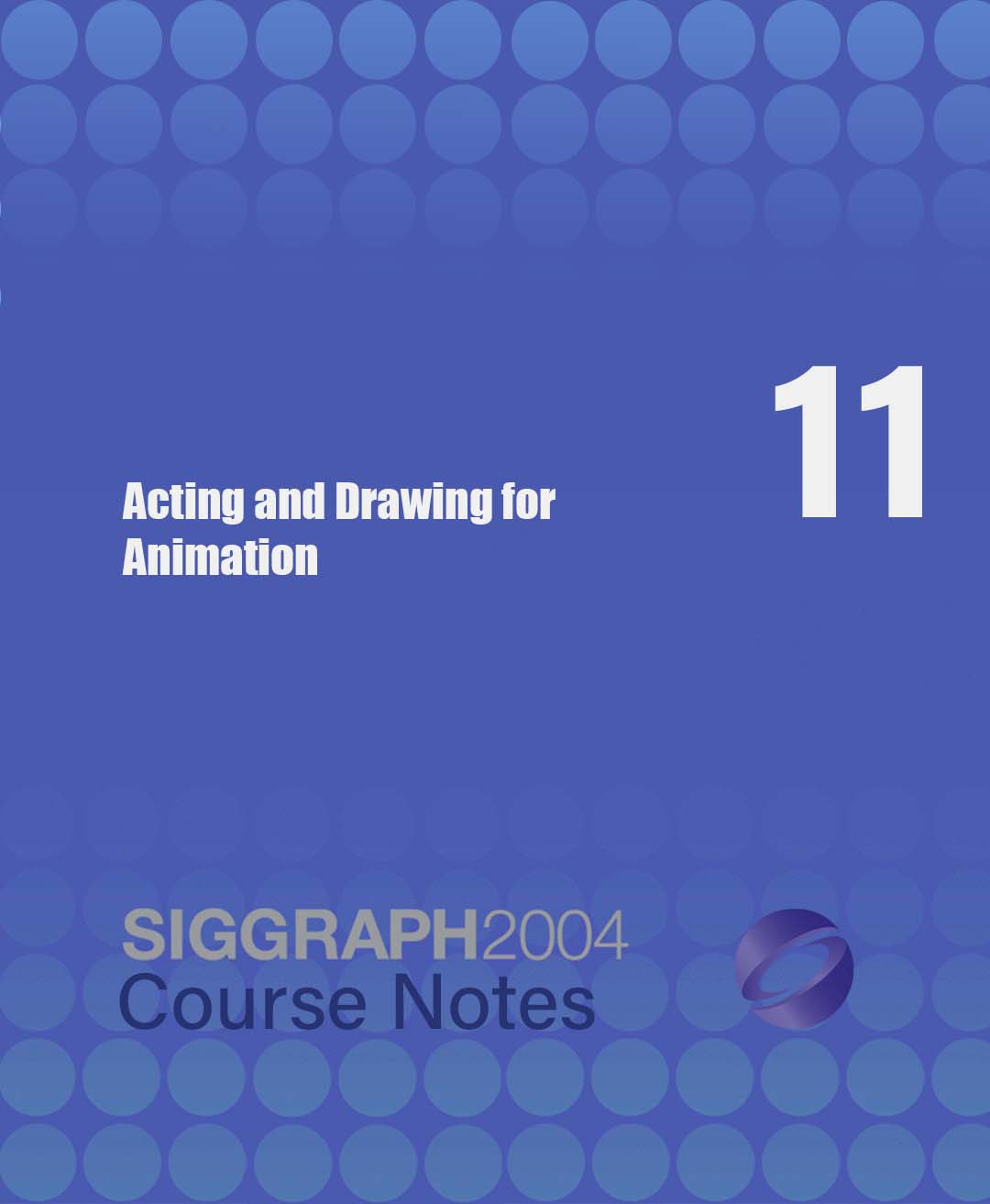“Acting and Drawing for Animation” by Hoshor, Finnegan and Lauria
Conference:
Type(s):
Entry Number: 11
Title:
- Acting and Drawing for Animation
Course Organizer(s):
Presenter(s)/Author(s):
Abstract:
- Warming up your instrument — isolation exercises and illusions.
- Trust and collaboration the studio — blindfolds are provided.
- Staging and positioning of characters for good silhouette — motion and drawing.
- Bringing a character to life — the empathy factor.
- Animal motion in human characterization — animal movement and interaction, using animal motion in human walks.
- Walks — mental, emotional and physical centers.
- Pantomime as a basis for strong dialogue animation — non-verbal iconography and timing, creating illusion.
- The take and double take in physical timing — squash and stretch, timing, trading the focus between two actors.
- Relaxation — contraction and release of all muscles.
- Emotional recall of past events (blindfolded).
- Showing emotion using everyday actions — walking, sitting, standing.
Prerequisites
The only requirements are an open mind and a willingness to participate in guided activities. It helps to have an understanding of the process of animation in either stop-motion, classical, cut-out, experimental film, or 3D media. Acting and dance experience is not required but will be introduced during kinesthetic exercises.
Intended Audience
Animators, producers, graphic artists, game developers, filmmakers, and students should attend. Through guided motion and drawing exercises, all attendees will gain an understanding of methods needed to produce strong animation.
Description
This workshop provides hands-on demonstrations of acting and drawing principles required to achieve strong animated performances. Participants view demonstrations of acting by lecturers and volunteers from the audience, and are invited to try each exercise. Drawing materials are supplied to follow live demonstrations. Examples of strong animation are projected. Larry Lauria, formerly of Disney Institute, demonstrates how he works at his animation desk.
The course addresses the following acting-for-animation principles:




